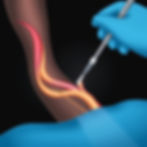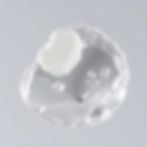Selected external publications on Peripheral Artery Disease
THE ELASTRIN SOLUTION
Therapeutic Advantages
This unique platform offers a safer, more effective alternative to existing treatments, at lower cost and reduced risk. Elastrin’s solution aims to restore blood flow and improve patient outcomes, particularly for those suffering from Peripheral Artery Disease (PAD).
Marketplace Advantages
-
No capital equipment costs
-
Procurement costs for the buyer lower than gold standard IVL
-
Less costly and risky than highly invasive revascularization
USPs
-
Reverses calcification in arteries without major surgery
-
Uses a proprietary antibody to target calcification at source - damaged elastin fiber
-
Drug loaded, time-release liposome safely and effectively decalcifies arteries
-
Reduces off-targeting risks by delivering high concentrations of combination therapy via FDA approved device
Targeted Therapy to Reverse Arterial Calcification
Elastrin Therapeutics has a groundbreaking therapy and platform uniquely designed to reverse arterial calcification by delivering treatment to where it starts - damaged elastin fibers in artery walls. Our proprietary antibody, Flexibzumab, selectively binds to degraded elastin, delivering a drug-loaded, time-release liposome directly to calcified areas. This innovative approach safely and effectively improves vascular function without invasive surgery.
Therapy combines four critical components
-
A proprietary antibody that homes in on damaged elastin.
-
Liposome engineered to release the active drug over time.
-
A safe and potent active agent that dissolves calcification.
-
FDA-approved delivery devices enabling precise, localized treatment.
Proof of Concept
Small Animal (Rat) in vivo data:
-
Systemic injection with final ELT-101 formulation showed significant removal of calcified deposits from aorta
Ex-Vivo data (Pig Femoral Arteries)
-
Calcification induced in pig femoral arteries
-
Incubation with ELT-101 showed removal of calcified deposits
Ex-Vivo (Human Femoral Arteries) data
-
Human calcified femoral arteries from amputated limbs
-
Incubation with ELT-101 removed calcified deposits in artery wall
Large Animal Studies, ongoing
-
PAD calcification porcine model developed
Proprietary antibody ‘Flexibzumab’
Fully humanized antibody
Binding to degraded elastin fiber
(Toxicological Studies completed; safe to use)
Active Drug
Ethylenediaminetetraacetic acid
(EDTA)**
Well-established carrier
Liposome to transport drug load
USP: Drug Loaded Liposomes Targeting Damaged Elastin*
* Elastrin Pipeline First Candidate, ELT-101
** EDTA clinical trials & FDA approval for heavy metal removal demonstrated good safety profile
Proprietary platform ‘DESTiNED’
Damaged Elastin-Specific Targeting Nanoscale-
liposomal, Efficacy-optimized Drug delivery

HOW PAD THERAPY WORKS
__Under%20fluoroscopy%20guidance%20catheter%20is%20inserted%20into%20in%20th.jpg)
Under fluoroscopy guidance, catheter is inserted into in the artery and guided to calcified arteries in the leg.

Balloon inflated to inject liposomal formulation into perivascular area of artery wall.

Liposomes stick to calcified area with elastin-specific antibody.

Liposomes slowly degrade and release EDTA locally.

EDTA chelates calcium from lesions and dissolves calcification, then transits to the kidneys to be excreted.
AI & PAD
Elastrin Therapeutics aims to be the world leader in combining AI-Assisted PAD imaging with reversal of arterial calcification. The extensive, real-world use of AI in imaging for vascular calcification is already transforming the management of peripheral artery disease (PAD) and has significant potential to improve efficacy and safety of PAD treatments.
AI-powered algorithms are automating the detection, segmentation, and quantification of arterial calcification in CT angiography, MRI, and other imaging modalities, making these assessments dramatically faster and more consistent. Deep learning models can generate highly accurate perfusion maps and vessel wall measurements in seconds, enabling precise assessment of calcification distribution.
Automation reduces diagnostic errors, standardizes risk stratification, and allows clinicians to identify high-risk lesions or patients who may benefit from earlier or more aggressive intervention.
AI-driven imaging tools can predict procedural success, amputation risk, and long-term outcomes, directly informing personalized treatment decisions and minimizing unnecessary or high-risk procedures.
By integrating these AI capabilities into routine PAD care, clinicians can optimize therapy selection, improve monitoring, and reduce complications—ultimately enhancing the safety and efficacy of PAD treatment strategies.

